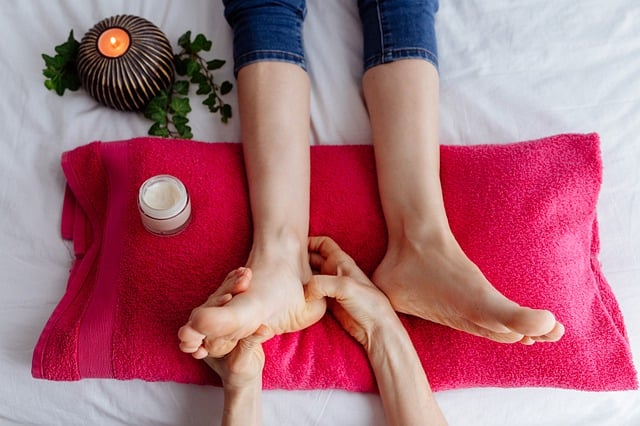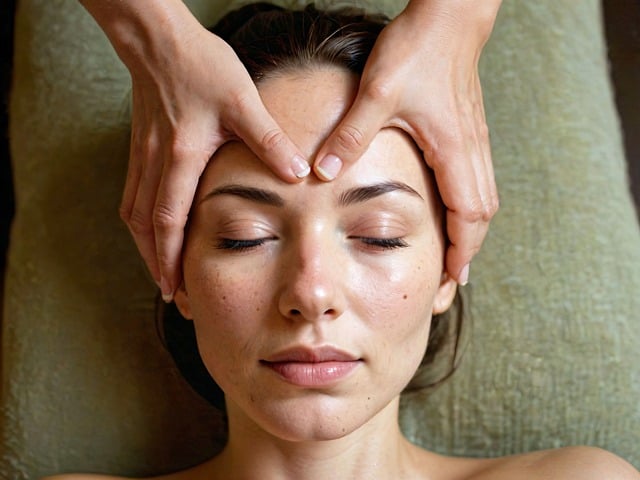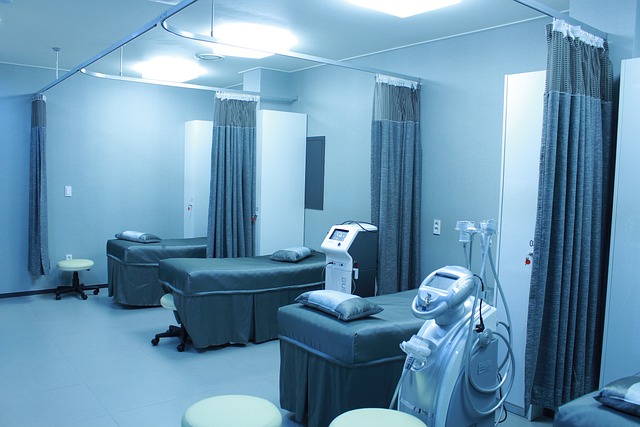Botox treatments, a popular non-invasive cosmetic solution, reduce fine lines and wrinkles by relaxing facial muscles through bacterial protein injections. Targeted areas include dynamic wrinkle hotspots like the forehead, glabellar lines, crows' feet, and neck vertical bands. Results last 3-6 months with minimal downtime, making it a temporary yet effective option for achieving a youthful appearance. Safety is paramount; choosing an experienced healthcare provider minimizes risks of bruising or swelling while ensuring optimal results. Proper post-treatment care includes rest, ice packs, clean skin, and sun protection to enhance healing. Regular maintenance is key to sustaining outcomes, with personalized plans tailored by dermatologists or aesthetic specialists.
“Uncover the transformative power of cosmetic Botox injections, a popular aesthetic procedure with a proven track record. This comprehensive guide delves into the science behind Botox, exploring its mechanisms in ‘Understanding Botox: The Science Behind the Treatment’. From common treatment areas to benefits, risks, and recovery, we provide an insightful overview. Learn about the step-by-step procedure, the importance of choosing the right practitioner, and real-life results. Discover long-term effects and maintenance tips for sustained results with Botox treatments.”
Understanding Botox: The Science Behind the Treatment

Botox, a protein derived from bacteria, has become a popular choice for cosmetic treatments, offering a non-invasive way to reduce the appearance of fine lines and wrinkles. The science behind Botox injections is quite fascinating. It works by blocking nerve signals that cause muscle contractions, which over time, lead to dynamic lines forming on the face. By relaxing these muscles, Botox treatments can provide a smoother, more youthful complexion.
This procedure involves injecting tiny amounts of Botox into specific areas of concern. The solution is carefully injected just below the skin’s surface, targeting the muscles responsible for causing wrinkles. It’s a quick and relatively painless process, and results typically last between 3-6 months, offering patients a prolonged period of enhanced facial esthetics without the need for frequent treatments.
Common Areas for Botox Injections

Botox treatments have gained immense popularity as a non-invasive aesthetic procedure, offering a solution for those seeking to reduce fine lines and wrinkles. The most common areas for Botox injections include the facial zones where dynamic muscle movement contributes to the formation of wrinkles over time. These areas typically include the forehead, between the eyebrows (known as glabellar lines), and around the eyes (crows’ feet).
Additionally, many individuals opt for Botox treatments in the neck to smooth out vertical bands or “banding” that can appear due to muscle contraction. Some procedures may also target specific problem areas like the jowls or chin to provide a more defined jawline. The versatility of Botox makes it a go-to choice for those aiming to achieve a youthful, relaxed appearance without surgery.
Benefits and Potential Risks

Botox treatments have gained significant popularity for their ability to reduce the appearance of fine lines and wrinkles, offering a non-invasive approach to skincare. One of the key benefits is its effectiveness in relaxing facial muscles, which can significantly lessen the depth and prominence of dynamic wrinkles, especially around the eyes and forehead. This results in a smoother, more youthful complexion.
However, like any cosmetic procedure, Botox injections also carry potential risks. Common side effects include temporary bruising, swelling, or discomfort at the injection site. In rare cases, patients may experience headaches, muscle weakness, or difficulty swallowing. It’s crucial to choose an experienced and qualified healthcare provider to minimise these risks and ensure optimal results from your Botox treatments.
The Procedure: What to Expect During and After

Botox treatments have become a popular choice for those seeking a non-invasive way to reduce the appearance of fine lines and wrinkles. During the procedure, a qualified healthcare professional will inject a small amount of Botox into specific muscle groups, targeting areas of concern such as frown lines, crow’s feet, or brow wrinkles. The process is generally quick and comfortable, with many patients describing it as just a few pinpricks.
After the treatment, there may be some mild redness, swelling, or bruising at the injection sites, but these typically subside within a day or two. Patients can resume their normal activities immediately, although it’s recommended to avoid strenuous exercise or intense sun exposure for a short period post-treatment. The results of Botox treatments usually become visible within 2-4 days, and they can last for up to 3-6 months, offering a temporary yet effective solution for smoother, younger-looking skin.
Choosing the Right Practitioner

When considering Botox treatments, choosing the right practitioner is paramount. Look for a qualified and experienced medical professional who specializes in injectables. Research their credentials, check patient reviews, and ensure they have a proven track record of safe and effective Botox procedures. Reputable practitioners will prioritize your comfort, provide detailed consultations, and offer personalized treatment plans tailored to your specific needs and goals.
Additionally, consider the setting where the procedure is performed. A clean, licensed, and professional clinic environment ensures safety and sterility. Don’t hesitate to ask about their sanitization protocols and the experience level of their support staff. Trusting your instincts and choosing a practitioner who makes you feel at ease can significantly enhance your overall experience with Botox treatments.
Recovery and Care Following Treatment

After receiving Botox treatments, it’s crucial to care for your skin and understand the recovery process. For a comfortable healing period, avoid strenuous activities and physical exercises for at least 24 hours following the procedure. Applying ice packs can help reduce any swelling or bruising that may occur, offering both relief and a soothing effect on the treated areas.
During the initial days post-treatment, keep your face gently clean and moisturized. Refrain from using makeup until advised by your dermatologist. Sun protection is essential; always use a broad-spectrum sunscreen with an SPF of 30 or higher to prevent hyperpigmentation and ensure optimal healing. Remember, proper aftercare enhances the results of Botox treatments and contributes to overall skin health.
Frequently Asked Questions (FAQs)

Frequently Asked Questions about Botox Treatments
What are Botox injections and how do they work? Botox, a neurotoxin derived from bacteria, is injected into muscles to temporarily paralyze them. This reduction in muscle activity smoothens or eliminates wrinkles, providing a more youthful appearance. It’s primarily used for facial areas like forehead, crow’s feet (around the eyes), and neck.
Are Botox treatments safe? Is there any downtime? When performed by a qualified healthcare provider, Botox injections are generally considered safe. Mild side effects may include bruising, swelling, or headaches. These usually subside within a few days. There’s typically no significant downtime, and most people can resume their normal activities immediately after the procedure.
Real-life Results and Patient Testimonials

Many patients seeking cosmetic enhancement turn to Botox treatments, eager to witness real-life results. The beauty of Botox lies in its ability to deliver subtle yet significant changes, often described as a natural-looking lift. Patient testimonials abound with stories of improved facial contours, reduced appearance of fine lines and wrinkles, and a more youthful glow. These transformations are not overnight; instead, they unfold over several days or weeks post-treatment, offering a gradual and organic-feeling enhancement.
One satisfied patient shares, “I was amazed by the results after my first Botox session. It wasn’t dramatic, but my deep forehead wrinkles were significantly softer, and I felt more confident immediately.” Another patient, highlighting the long-lasting effects, remarks, “I’ve been getting Botox injections for a few years now, and each treatment lasts me about 4-6 months. It’s become part of my self-care routine, ensuring I look and feel my best without any invasive procedures.” Such firsthand accounts underscore the appeal of Botox as a minimally invasive approach to anti-aging.
Long-term Effects and Maintenance

Botox treatments have become a popular way to achieve a youthful appearance, but understanding the long-term effects is crucial for informed decision-making. While many people experience significant and lasting results, it’s important to remember that individual experiences can vary widely. The effects of Botox typically last between 3 to 6 months, after which the treatment needs to be repeated to maintain the desired outcomes. This maintenance schedule ensures that the muscles remain relaxed, preventing the return of dynamic lines and wrinkles.
Over time, as we age, the results may gradually start to fade, and new wrinkles might form in previously untreated areas. Regular Botox treatments can help mitigate this by smoothing out the skin’s surface and reducing the appearance of fine lines and crow’s feet. It’s essential to consult with a qualified dermatologist or aesthetic specialist to determine an appropriate maintenance plan that aligns with your goals and skin type.
